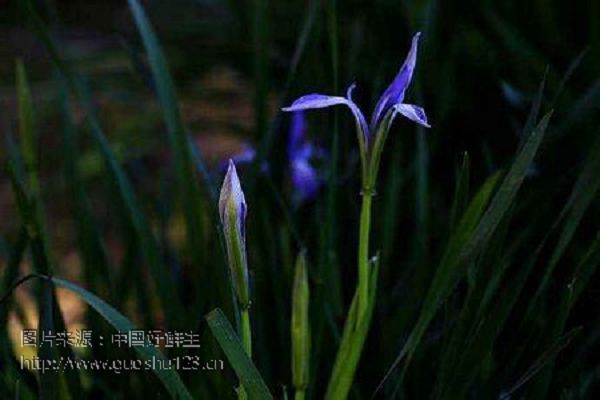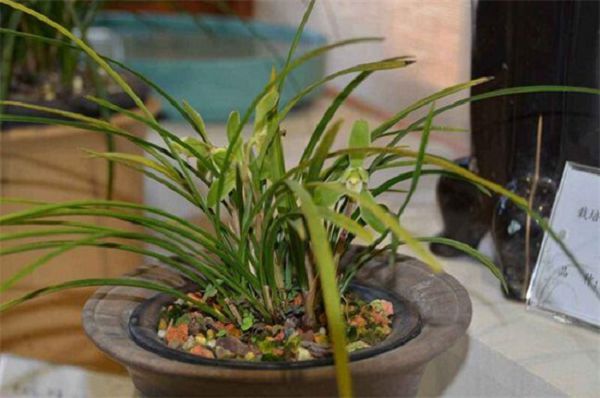When does Malan blossom? What month is the florescence of Malan?

Iris, also known as Malan, dry cattail, leek and so on, is a perennial herb of Iris of Iridaceae, a variety of Iris, perennial herbs. So when does Malan blossom? What month is the florescence of Malan?
According to the understanding of Malan flower growers, the florescence of Malan is from May to June.
Growth habit
The root system is well developed, the depth can reach 1 meter, and the whisker root is dense and developed, with umbrella distribution, which not only makes it have strong resistance and adaptability, but also has a strong ability to bind the soil and retain water.
The upright leaves of Iris chinensis can effectively reduce water evaporation, alleviate Rain Water's direct erosion to the surface, and is also conducive to root ventilation.
Under harsh environmental conditions, the aboveground part of Iris will become relatively low, and the aboveground growth will be reduced by more than 20%; at the same time, the root system will be more developed and will increase by more than 10%, which will help it to survive normally in adverse environments such as high temperature, drought, waterlogging and so on.
The seeds germinate normally under the condition of 0.44% salt content; when the salt content is 0.51%, the germination rate decreases obviously, and when the salt content reaches 0.75%, the germination ability is lost. The germinated seedlings could still grow normally, blossom and bear fruit when the soil salt content was 0.27% and the pH value was 7.9-8.8.
Born in wasteland, roadside, hillside grassland, especially in overgrazed saline-alkalized grassland.
It can be used for soil and water conservation and improvement of saline-alkali soil because of its salt-alkali resistance, trampling resistance and developed root system.
Geographical distribution
Distributed in Heilongjiang, Jilin, Liaoning, Inner Mongolia, Hebei, Shanxi, Shandong, Henan, Anhui, Jiangsu, Zhejiang, Hubei, Hunan, Shaanxi, Gansu, Ningxia, Qinghai, Xinjiang, Sichuan, Xizang. It is also produced in North Korea, Russia and India.
Plant characteristics
Drought resistance characteristics
The root system is well developed, the depth can reach more than 1 meter, and the whisker root is dense and developed, with umbrella distribution, which is not only a strong guarantee of its strong resistance and adaptability, but also has a strong ability to bind the soil and retain water.
The upright leaves of Iris chinensis can effectively reduce water evaporation, alleviate Rain Water's direct erosion to the surface, and is also conducive to root ventilation.
Under harsh environmental conditions, the aboveground part of Iris will become relatively low, and the aboveground growth will be reduced by more than 20%. At the same time, the root system will be more developed, and the root system will increase by more than 10%. This is conducive to its normal survival in adverse environments such as high temperature, drought, waterlogging and so on.
Salt and alkali tolerance
Iris is a heavy saline-alkali tolerant plant, its seeds germinate normally under the condition of 0.44% salt content; when the salt content is 0.51%, the germination rate decreases obviously, and the salt content reaches 0.75% and loses its germination ability.
The germinated seedlings can still grow normally, blossom and bear fruit under the condition of soil salt content up to 0.27% and pH value up to 7.9-8.8. It is a rare good material for greening and improvement of saline-alkali land.
Chlorophyllin
In northern China, Iris generally turned green at the end of March, began to bloom in late April, bloomed from mid-May to the end of May, finally bloomed in mid-June, withered and yellowed in early November, and the green period lasted more than 280 days.
Iris lanceolata has green color, elegant and beautiful flowers, fragrant nectar and a florescence of more than 50 days.
Resistance to diseases and insect pests
Iris mandshurica has a very strong ability to resist diseases and insect pests, which not only never occurs in a single vegetation community, but also rarely occurs after it is mixed with other plants because of its special secretions, which greatly reduces the input and cost of pest control after the establishment of green land.
- Prev

How to raise orchids on the family balcony to bloom year after year
How to raise orchids on the family balcony to bloom year after year
- Next

What flowers bloom all the year round? Orchids, peach blossoms, periwinkle, sunflowers
What flowers bloom all the year round? Orchids, peach blossoms, periwinkle, sunflowers
Related
- Is the orchid suitable for indoor use? Is it good for the body?
- How to prevent the empty root of orchids?
- What to do after the crab claw orchid is withered?
- Why are the leaves of orchids always yellow? Fertilizing and watering.
- Can the root of the gentleman orchid be saved if it is rotten?
- Diagnosis and treatment of cotton-blowing beetle insects in Cymbidium
- There is a way for a gentleman's orchid to rot.
- What is the most suitable temperature and humidity for the orchid?
- How to raise a gentleman's orchid? Cultivation techniques of Cymbidium
- How to prepare the nutritive soil for the cultivation of Cymbidium

